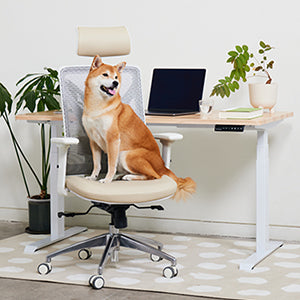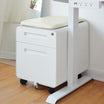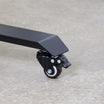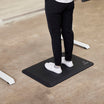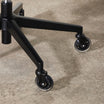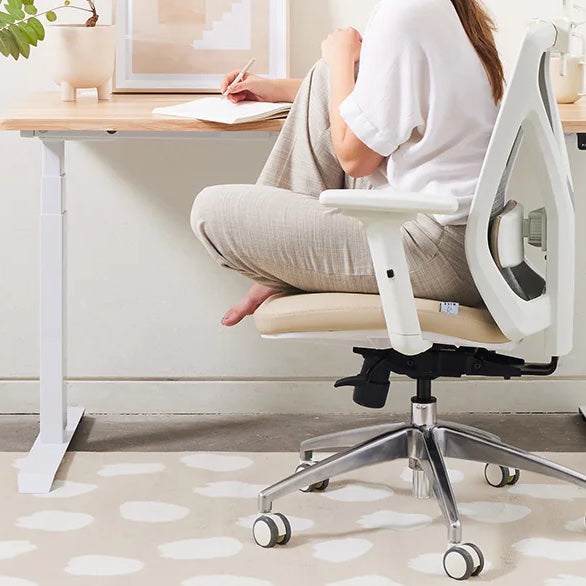As we continue to embrace an ever increasing sedentary lifestyle, we must also be mindful of the negative effects it can have on our bodies. Ergonomic chairs are specifically designed to support your spine and posture to prevent future complications caused by prolonged periods of sitting, such as back pain, headaches and more. It is important to maintain spine health as it is the body’s central support structure and is what allows you to move around in your day-to-day life. Throughout this article, we will discuss what can happen if you neglect the health of your spine, and how you can take care of it.

Image sourced from autonomous.ai
Introduction of The Spine
The spine is your body’s central support structure that is made up of the vertebrae, facet joints, intervertebral disks, spinal cord, nerves, and soft tissues. These parts are responsible for the three natural curves within the spine that create the “S-shape”. This curve is important because it helps absorb pressure to the body and protect the spine from being injured.
Symptoms of Poor Spine Health
Although the spine is strong and can handle a lot of pressure, the vertebrae and discs can wear down overtime which results in pain and other various conditions. Many of us are adjusting or are already adjusted to a lifestyle where we spend a considerable chunk of our day sitting down, behind a monitor. In fact, 70% of people spend 6 or more hours everyday sitting down which can hurt your back, especially if you have bad posture or don’t use an ergonomic chair. The compression of the discs causes premature degeneration, resulting in symptoms such as..
- Body aches
- Chronic pain
- Rounded shoulders
- Bent knees when standing or walking
- Head that leans forward or backward
- Muscle fatigue
- Headaches
- Poor digestion

Image sourced from backforever.com
How You Can Improve Your Spine Health and Posture
Stretches
- Curve Reversal: If you have been leaning over your desk, stretch by going backwards
- Stretching 2-3 times a week to boost flexibility
- Muscles that often become tight include the pectorals, scalenes traps in the neck, and the hip flexors of hip. It is also important to strengthen muscles that are not used, such as the abdominals, glutes; back extensors and scapular muscles. These will help restore the spine’s muscle balance, improve posture and reduce pain
Exercise
- Exercise regularly to maintain and develop muscles
- Lose weight to decrease pressure on back
- Abdominal crunches
- Did you know that just two minutes of light activity to every hour spent sitting can lower your risk of dying by one-third
How You Can Maintain Your Spine Health
There are many ways you can be cognizant of your spine health, some of which include..
1. Sitting in Firm Chairs
It is difficult to implement ergonomics into a soft and squishy chair and although sitting in one may be comfortable, it does not have the structure to support the curve of your back and will cause you to slouch in your seat overtime. The natural “S-shape” will turn into a “C”, therefore it is important to choose a chair that will provide adequate support for the benefit of your posture.
2. A Mattress That Will Keep Your Spine Straight
Good posture is not limited to just sitting and standing. While sleeping, the muscles and ligaments are being recharged and healed and must also be protected. A good mattress will allow you to keep your back straight while you are sleeping on your back or sides.
3. Using The Right Pillow
Your pillow will not only support your neck but can also help keep your spine in the proper position. A pillow that is too high can strain your muscles.
4. Ergonomic Chairs
Switching to ergonomic chairs in the workplace or for other activities that require prolonged periods of sitting can greatly improve your posture. An ergonomic chair should be adjustable in seat height and forward or backward tilt.
Ergonomic Posture GuideI
Although you may have already purchased yourself an ergonomic chair, it is also important to use it properly to be able to get the full effects.
1. Measuring Elbow Distance
Sit as close as possible to your workspace and keep your upper arms parallel to your spine. Your hands should be rested on your desk so that your elbows are at a 90-degree angle. If not, you can adjust the height of your chair to correct your positioning.
2. Measuring Thigh Distance
Your fingers should easily fit under your thigh at the edge of your chair. If not, you should have a footrest to help raise your feet. Alternatively, you may need to raise the chair and desk if there is more than a finger-width between your thigh and the chair.
3. Measuring Calf Distance
Sit with your lower back against the chair, and move your clenched fist between the back of your calf and the front of your chair. If your calves are too close to your chair, you will need to move the backrest forward, add a lumbar support or get a new chair, as the chair will be too deep for you otherwise.
4. Lower-back Support
Your back should be pressed against the back of your chair. To help reduce strain on your back, there should be a cushion that is placed at the small of your back to help support the arch.
5. Eye Level
Your gaze should be aimed at the center of your computer screen. If not, adjust the height of your monitor so that you do not have to tilt your neck to read the screen comfortably.
6. Armrest
The armrest of your chair should slightly lift your arms at the shoulders. This alleviates some of the stress on your neck and shoulders and reduces the chances of slouching forward.
Realistically, most people will not follow every point to a T, but there are measures you can take prior to getting distracted in your day-to-day sitting. Changes such as height adjustments or back cushions will change your workspace to better support your spine and paying attention to your sitting posture will follow suit. The key is to be mindful and gradually implement the tips given in this article, your body will thank you in the long run!

